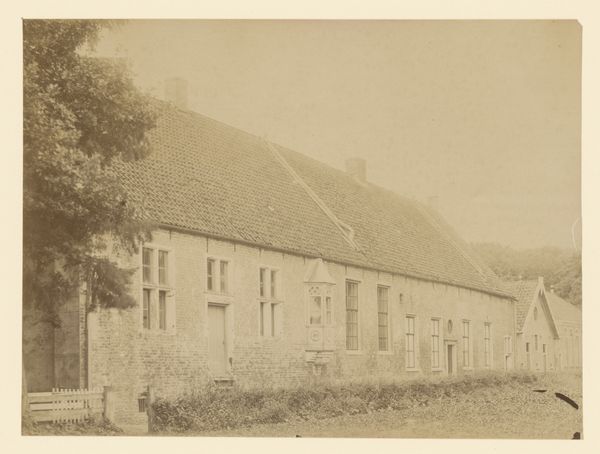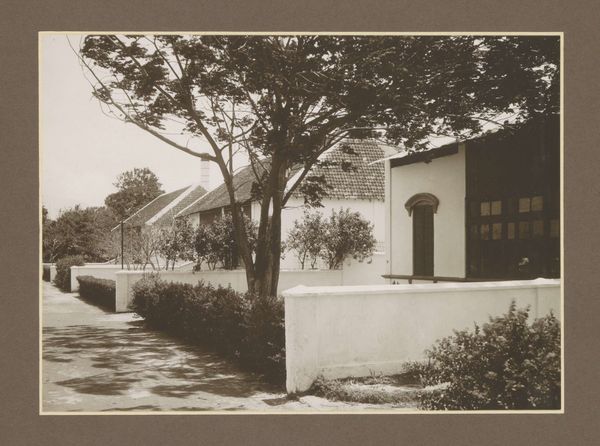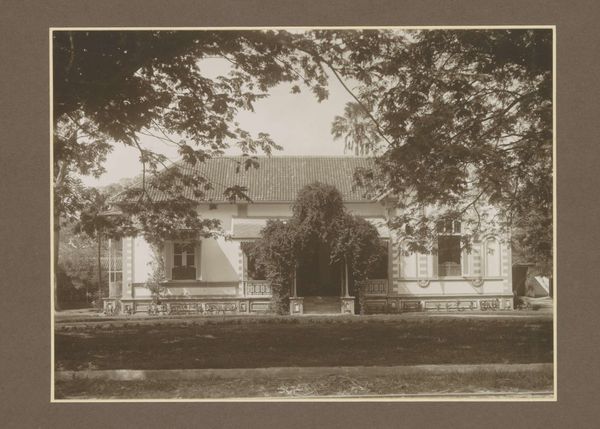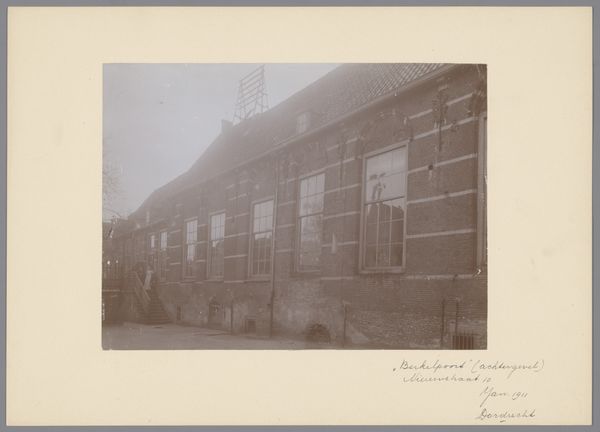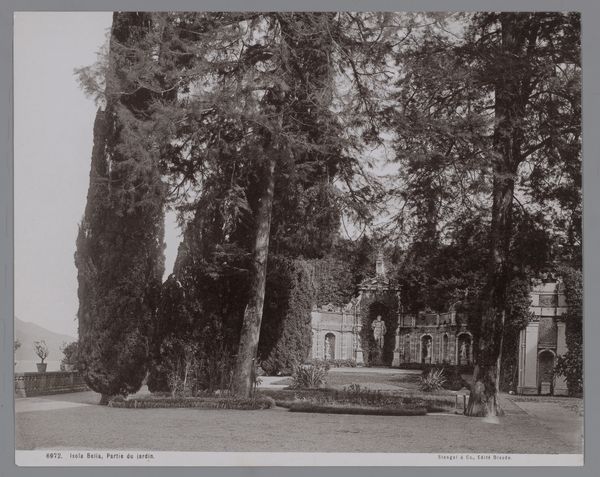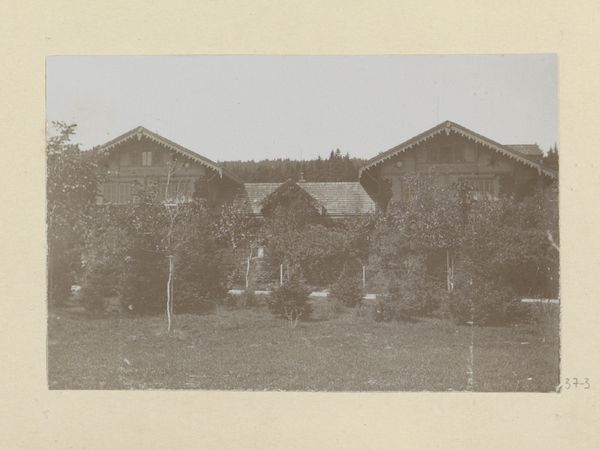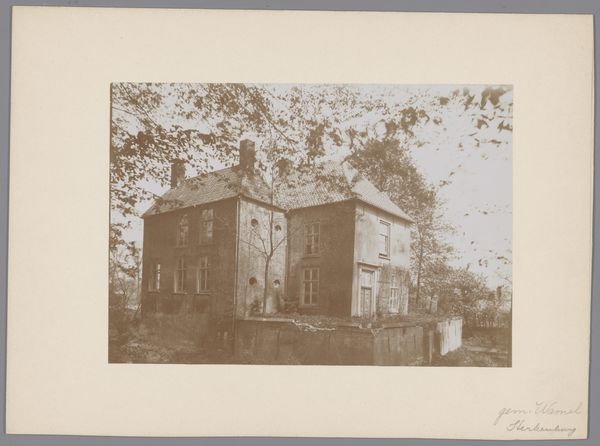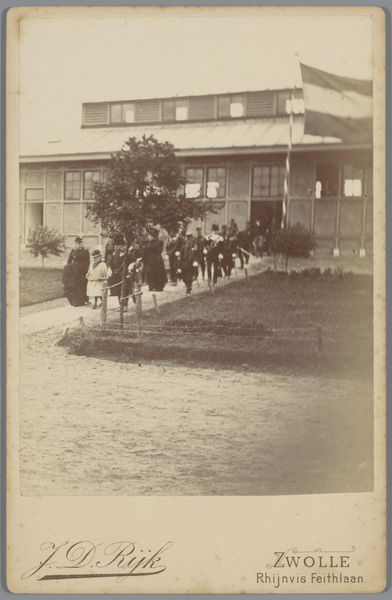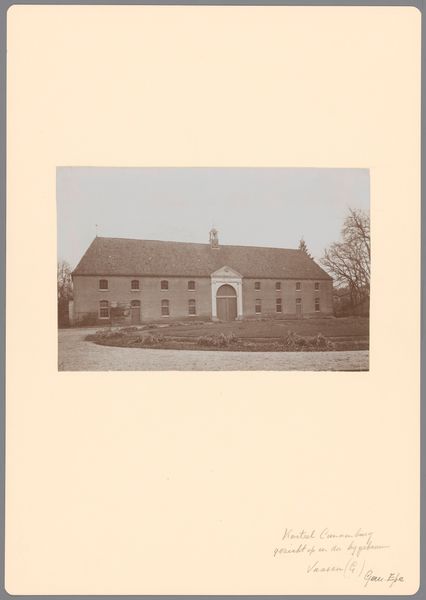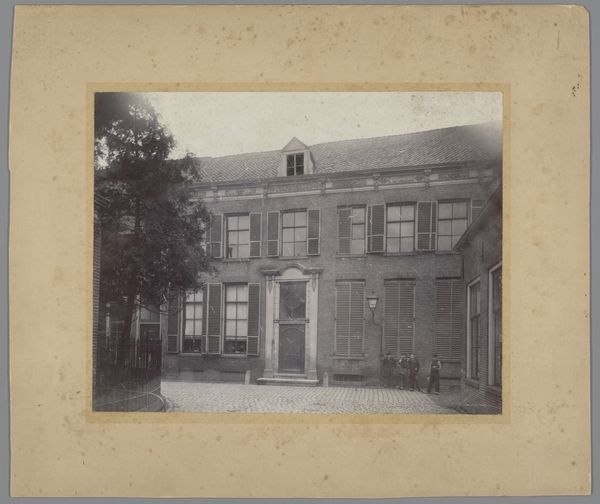
photography, gelatin-silver-print
#
landscape
#
photography
#
gelatin-silver-print
#
realism
Dimensions: height 60 mm, width 85 mm
Copyright: Rijks Museum: Open Domain
Editor: This gelatin-silver print, titled "Boerderij met oprijlaan," or "Farm with Driveway" was created by an anonymous artist between 1940 and 1944. The image itself seems fairly straightforward—a simple composition of a farm building. How might we interpret its meaning in a broader context? Curator: The years of its creation, 1940-1944, place it squarely within the period of Nazi occupation in the Netherlands. A seemingly benign landscape image, such as this one, has the potential to embody layers of complex cultural and political meaning, especially in the context of Realism as a style. What would have motivated an artist to document a farm during this tumultuous time? Editor: Perhaps a sense of nostalgia? A longing for normalcy in a period of immense disruption? Curator: Precisely. The "farm" is never just the farm. In times of conflict and upheaval, focusing on the everyday can become a form of quiet resistance or a way of preserving memory against erasure. And, consider the photograph as an object itself: how was this image displayed, shared, or concealed during and after the war? What was the role of photography at that specific time? Editor: It is powerful to think about this image, and perhaps many others, as documents of resilience, especially because they are created anonymously. Curator: Indeed. It compels us to look beyond the surface of the photograph and contemplate its function as a social and cultural artifact. Art historians need to address the public role of such seemingly unassuming artworks, and their engagement within a larger discourse. Editor: I'll definitely consider that whenever analyzing an artwork. Thanks for your insight!
Comments
No comments
Be the first to comment and join the conversation on the ultimate creative platform.
